 All Our Tours
All Our Tours
Written by: Alice Le
Updated date:23/10/2025
Hello, I’m Alice. I’m a passionate travel expert with years of experience exploring Vietnam, Laos, Cambodia, and Thailand. My journeys through these countries have given me a deep appreciation of their landscapes, traditions, and cultures, which I now share through authentic insights and tailored recommendations. With this expertise, I can design trips that perfectly match your expectations and create truly unforgettable journeys. I’m here to guide you toward unique experiences, crafted just for you.
Contents
Son Doong Cave shocked the world with its incredibly gigantic size, eventually earning the title of the largest natural cave on the planet. Hidden deep within Vietnam’s Phong Nha–Ke Bang National Park, this awe-inspiring wonder was brought to global fame after a special expedition featured by National Geographic revealed its true scale and beauty. Let’s discover the extraordinaryness of this cave with us.
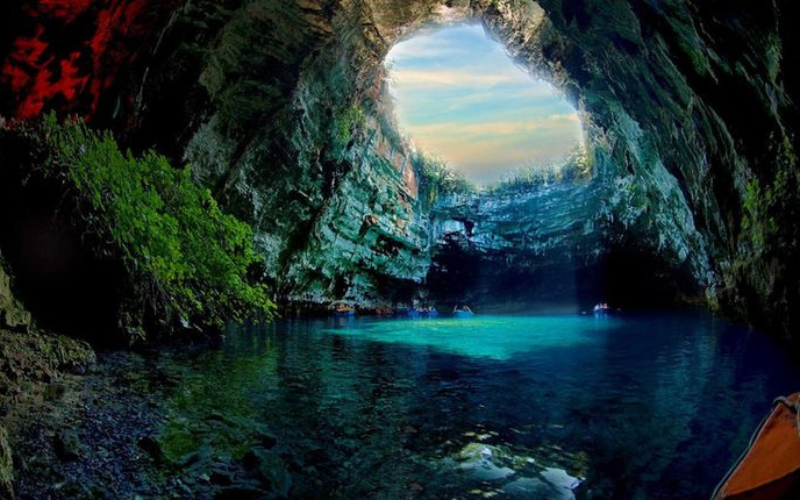
Largest Cave in the World – Son Dooong
The world’s largest cave, Son Doong Cave, is located in Quang Binh Province, Central Vietnam, inside the UNESCO-listed Phong Nha–Ke Bang National Park. The cave was first discovered by a local man named Ho Khanh in 1991 while searching for shelter from a storm. Years later, in 2009, it was officially explored and measured by a team of British cavers from the British Cave Research Association (BCRA).
Its name, “Son Doong”, translates to “Mountain River Cave” – perfectly describing its landscape shaped by an ancient underground river. The cave is so massive that it could fit a 40-story skyscraper inside and stretch for nearly 5 kilometers (3 miles) in length.
In 2009, an exploration team together with National Geographic announced that Son Doong Cave is the largest natural limestone cave in the world. Later, in 2013, the Guinness World Records officially recognized Hang Son Doong as the world’s largest natural cave.
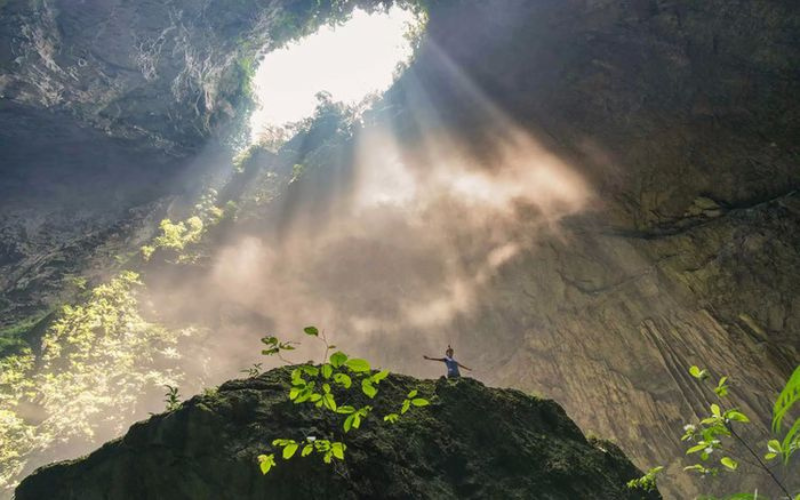
“Son Doong”, translates to “Mountain River Cave”
Son Doong’s size is almost unimaginable with its massive scale and breathtaking beauty. Walking inside this cave, tourists feel like stepping into another world.
Stretching nearly 9 kilometers in length, the cave reaches up to 200 meters in height and 160 meters in width at certain points. With an estimated total volume of 38.5 million cubic meters, Hang Son Doong officially surpasses Deer Cave in Malaysia, which previously held the title of the world’s largest cave. Every step inside this underground giant reveals the sheer power and magnificence of nature, making it one of the most extraordinary destinations on Earth.
However, what truly makes Son Doong Cave special and captures the world’s attention – is the unique world hidden inside. The cave is home to massive stalagmites that reach more than 80 meters high, a primeval forest growing deep within its chambers, and a distinct ecosystem with its own weather system. Inside, explorers can find an endless underground river winding through the darkness, it’s a mysterious waterway that no one has fully explored. This rare combination of scale, biodiversity, and natural beauty makes Hang Son Doong one of the most extraordinary and mysterious places on Earth.
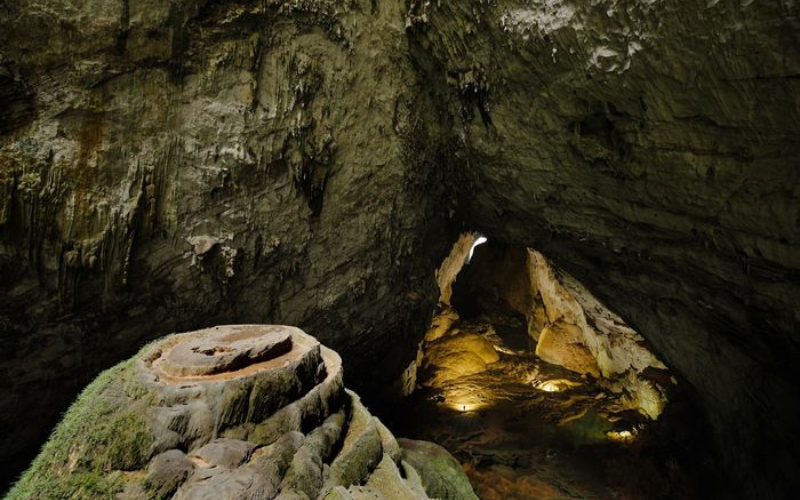
What Makes Son Doong Cave So Interesting and Mysterious?
Unlike ordinary caves, Son Doong has natural skylights where the ceiling collapses, allowing sunlight and rain to enter. These openings create a microclimate inside the cave, completing with mist, clouds, and even rain. This phenomenon supports life and makes Son Doong one of the only caves on Earth with its own internal ecosystem.
Hang Son Doong hides a majestic underground river that winds its way through the vast limestone chambers. Fed by several rivers from the surrounding Phong Nha- Ke Bang National Park, this subterranean waterway has carved out the cave’s spectacular formations over millions of years. As it flows deeper inside, the river creates waterfalls ranging from 5 to 10 meters high, filling the cave with the powerful sound of rushing water echoing through the darkness. The sight and sound of this underground river make Son Doong Cave feel alive with a dynamic, ever-changing natural wonder hidden beneath Vietnam’s jungles.

The cave in Vietnam with its own ecosystem
Through the dolines (sinkholes), sunlight nurtures a lush rainforest inside the cave. Ancient trees, ferns, moss, and vines thrive in this underground world, earning it the nickname “The Underground Lost World.” Explorers can hike beneath towering trees and hear birds and insects echoing through the cave.
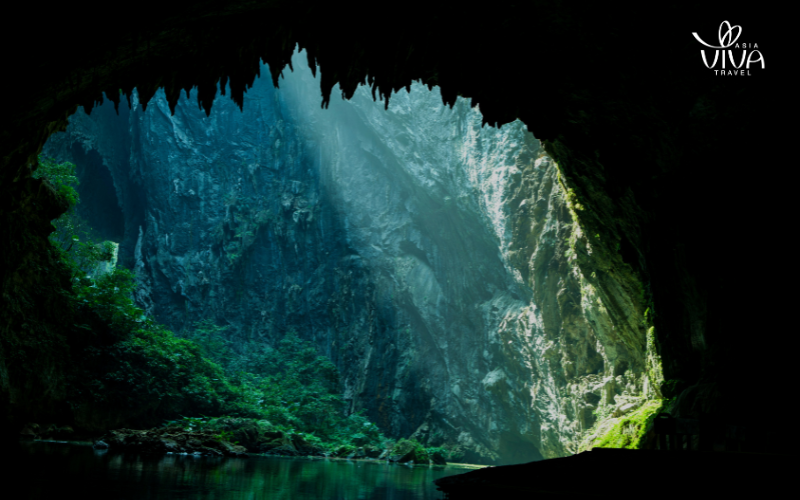
A Hidden Underground Jungle
Sunlight filtering through two giant sinkholes inside Son Doong Cave creates the perfect conditions for a thriving underground forest. Thanks to this rare light source, biologists have identified over 200 plant species growing here – including algae, moss, vines, shrubs, and towering trees reaching up to 30 meters tall.
The underground river running through the cave also supports a variety of life forms that have adapted to the darkness. So far, scientists have discovered more than seven new animal species inside Son Doong, such as fish, woodlice, centipedes, spiders, and scorpions. These fascinating creatures share common traits — no eyes and translucent bodies — showing how evolution has shaped life in this hidden world beneath the Earth’s surface.
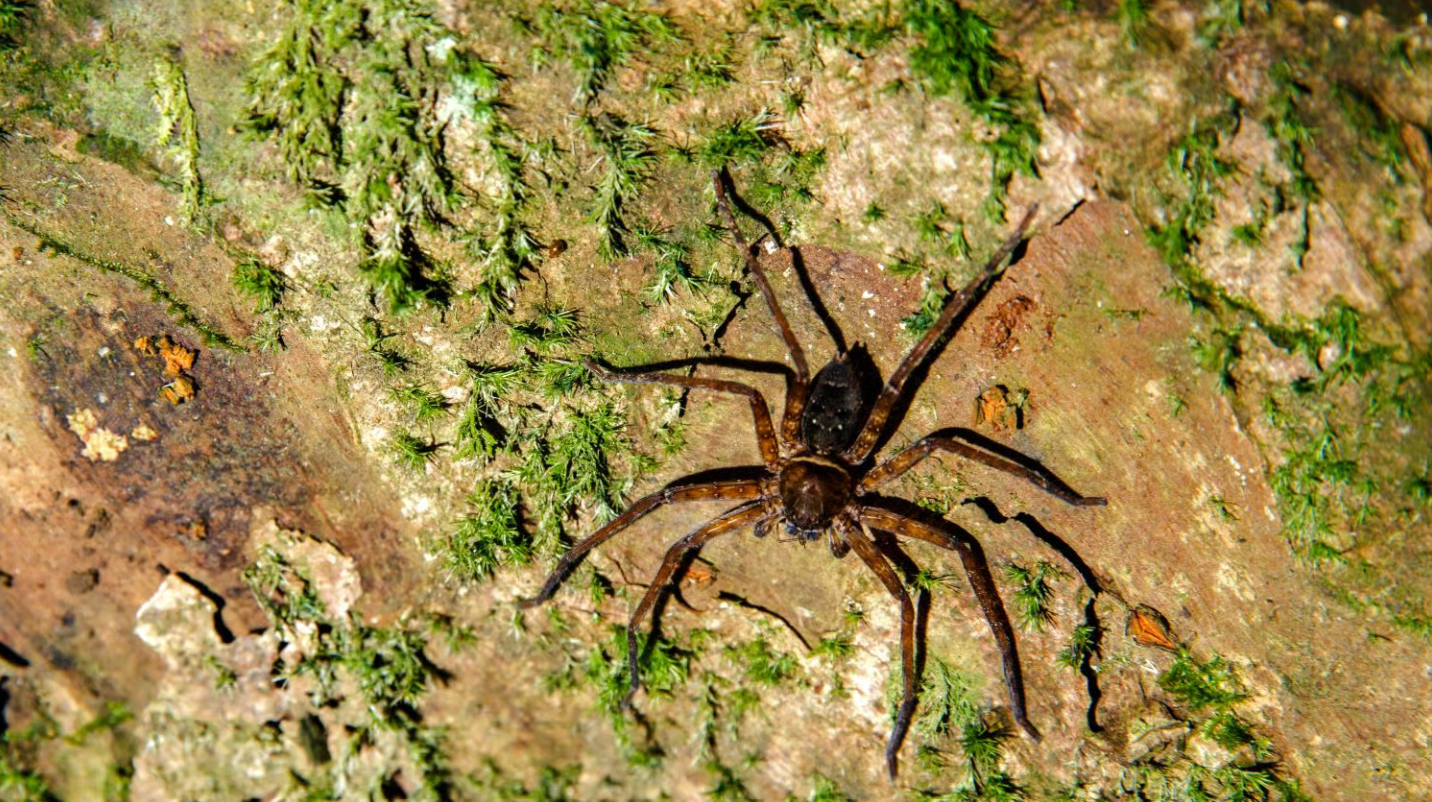
Unique Son Doong Cave Animals
This is not your typical relaxing vacation, it’s a thrilling adventure expedition to Son Doong Cave, designed for true explorers seeking a once-in-a-lifetime experience. The Son Doong Cave tour combines breathtaking natural scenery with physically demanding challenges, making it one of the most extraordinary adventures on Earth.
Although participants will have moments to rest and enjoy the stunning underground landscapes, this is still a challenging journey that requires good physical strength and mental endurance. With determination, proper safety equipment, and support from a professional expedition team, travelers can safely conquer the largest cave in the world and savor every unforgettable moment inside this natural wonder of Vietnam.
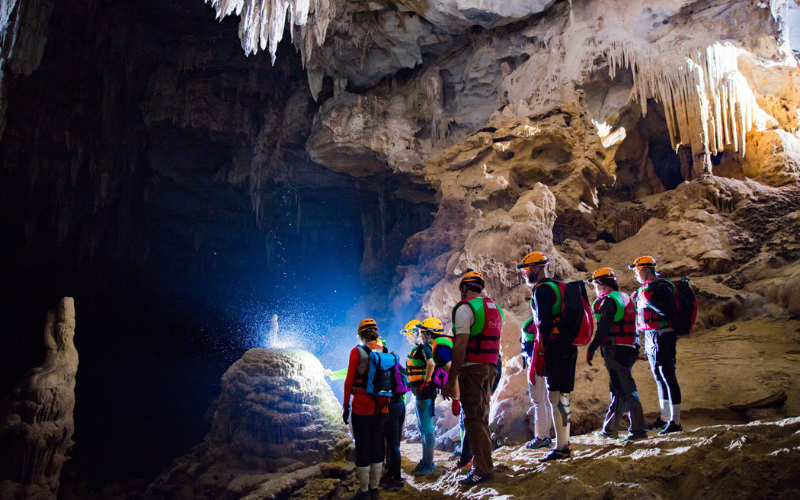
Son doong cave tour in Vietnam
The Son Doong expedition tour operates from January to August each year. From September to December, tours are closed due to seasonal weather conditions in Phong Nha-Ke Bang National Park. Because each tour is limited to a small number of participants, it’s highly recommended to book several months in advance to secure your spot and have enough time to prepare physically for this adventure.
To join the Son Doong Cave expedition, participants must be at least 18 years old, in good health, and have some previous trekking experience or engage in regular physical exercise.
There is no maximum age limit, and many older travelers have successfully completed the trek including some participants over 75 years old who managed to conquer the world’s largest cave. What truly matters is your determination, fitness, and adventurous spirit.
If you love nature but prefer a gentler pace, there are still plenty of ways to experience the beauty of Phong Nha-Ke Bang National Park without the intensity of the full Son Doong expedition. You can explore Paradise Cave (Thien Duong Cave), Phong Nha Cave, or Dark Cave (Hang Toi), each offering stunning limestone formations, underground rivers, and easier walking trails.
These shorter tours allow you to admire Vietnam’s spectacular cave systems, rich biodiversity, and lush tropical landscapes. It’s perfect for eco-tourists, photographers, and anyone who wants to experience the magic of Son Doong’s surroundings without extreme adventure.

Best Time to Book the Son Doong Tour
Son Doong Cave is located deep inside Phong Nha- Ke Bang National Park, in Quang Binh Province, Central Vietnam. To reach Son Doong, visitors first travel to Dong Hoi City, then continue by car or bus to Phong Nha (about 45 minutes away).
From Hanoi to Son Doong Cave
From Ho Chi Minh City to Son Doong Cave
From Da Nang to Son Doong Cave
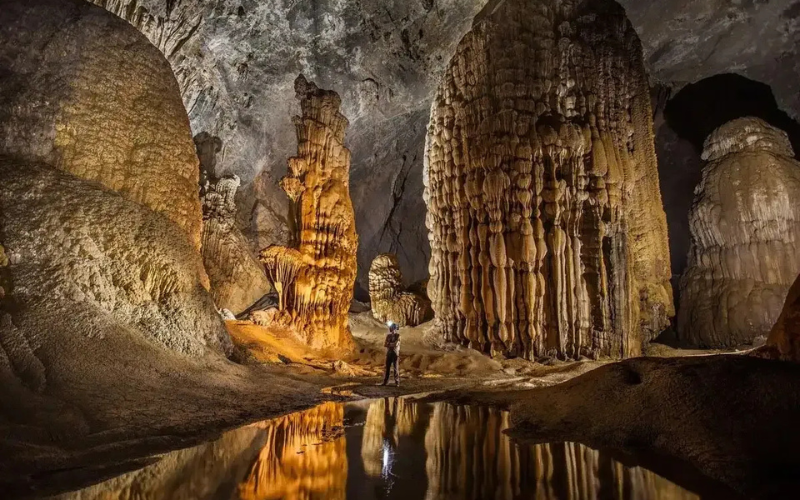
How to get to Son Doong cave ?
The best time to visit Son Doong Cave is anytime between January and August. At this time, the weather is good, not too much rain so it’s easy and wonderful to explore the cave.
Sơn Đoòng is considered one of the most challenging treks in the world. It involves multi-day jungle trekking, river crossings, steep climbs, and cave descents using ropes. Therefore, it is not recommended for most children, and the minimum age for this expedition is 18.
However, families with children can still explore other stunning caves in the region that are suitable for younger visitors. Caves such as Phong Nha and Paradise Cave feature easy walking paths, safety rails, and breathtaking views – making them ideal for a family-friendly adventure.
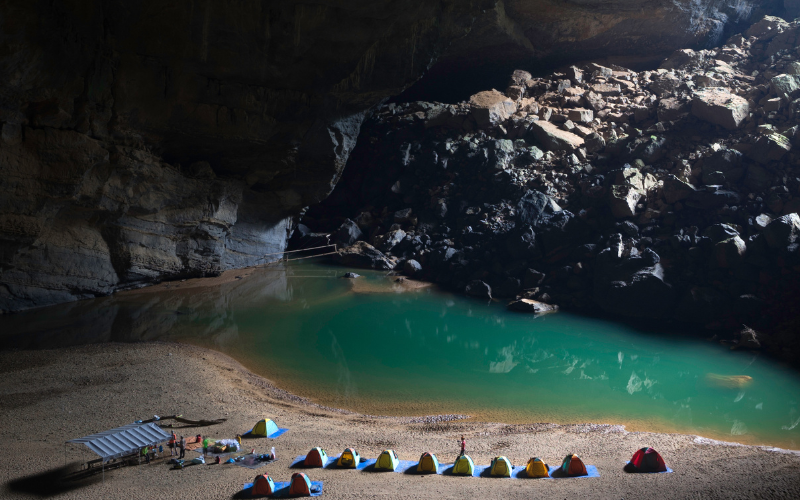
Sơn Đoòng is considered one of the most challenging treks in the world
Sơn Đoòng Cave is more than just a travel destination – it’s a once-in-a-lifetime adventure that leaves every visitor in awe. With its otherworldly landscapes, colossal caverns, and surreal beauty, it offers a truly unforgettable experience for those who seek the extraordinary.

 26/11/2025
26/11/2025A travel guide with tips for first time travellers to Vietnam covers everything from getting a visa, Internet, SIM Cards, tipping and how to get around, survival tips and more

 26/11/2025
26/11/2025Visiting Cambodia and Vietnam for stunning landscapes, vibrant cities, ancient temples, and UNESCO World Heritage sites is a complete travel experience for tourists.

 26/11/2025
26/11/2025Visit Da Nang with our detailed guide to the best hotels, resorts, Michelin-starred restaurants, and local street food for an unforgettable Vietnamese getaway.

 26/11/2025
26/11/2025Discover the best Vietnam tour packages from USA and enjoy a safe, unforgettable journey through Vietnam’s culture, beautiful nature, and rich history.